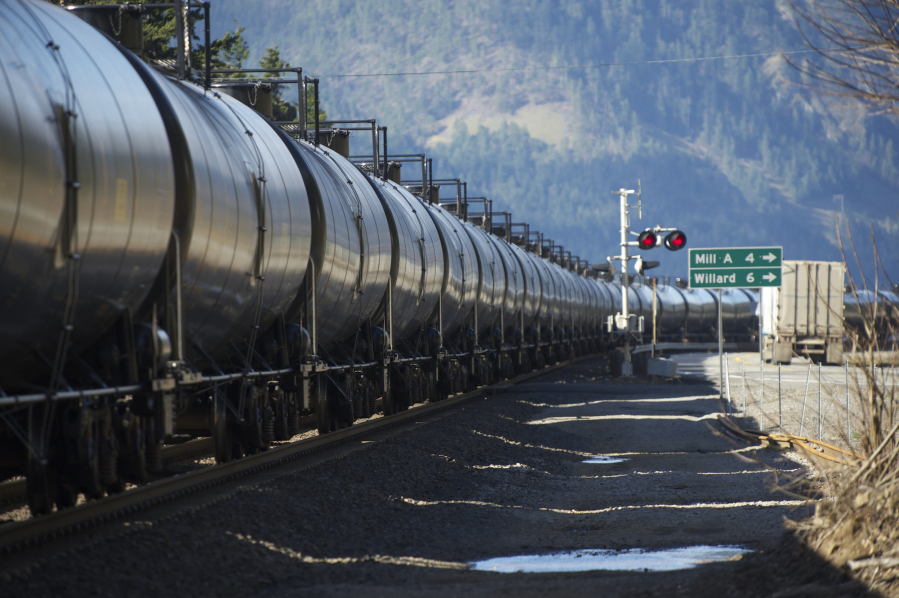About 21,600 rail cars carrying just under 618 million gallons of crude oil rolled into Washington state between October and December, according to a new report released by the Department of Ecology.
The majority of the crude shipped by rail rolled through the Columbia River Gorge and Vancouver.
Released Thursday by the Department of Ecology, the report dubbed “Crude Oil Movement by Rail and Pipeline” is the first of its kind since a 2015 law required greater transparency around crude oil movement in the state.
“Before this rule was effective, the only info we could get was through the federal Bakken Emergency Order — and that was only for Bakken unit trains carrying over 1 million gallons,” said Jase Brooks an environmental planner in Ecology’s Spills Program.
Of all the crude-by-rail shipments reported to the department last quarter, 94 percent were sourced from North Dakota. The shipments then entered the state at Spokane, traveled through the Columbia River Gorge, then moved up along the Interstate 5 corridor toward Puget Sound and often into the northwest corner of the state.
The remaining portion was sourced from Alberta, Canada. All but once in 12 weeks it was shipped in through northwest Washington.
The lowest weekly volume of oil shipped in one week was 37 million gallons. The highest was about 1.37 billion gallons.
The report only tracks oil that was unloaded or loaded inside the state. If oil was transported through the state without being unloaded, the department would have no way to track it, Brooks said.
Only 35 percent of total oil volumes were shipped by rail in the last quarter of 2016. Nearly 1.4 billion gallons of crude oil, 65 percent of the oil moved in Washington, was transported by vessels.
The agency collected the information from facilities that receive crude oil by rail. The department gathers information on where the oil was sourced, the railroad route taken to the facility within the state (if it’s known), the scheduled time and volume of the delivery, and the gravity of the oil.
Department officials said the report provides greater transparency to emergency responders, city leaders and the public in general.
“If you know the route you’re on and you’re interested in the week-by-week summary, it’s really helpful to know what’s going on in your community,” Brooks said.
The report didn’t include any data on pipelines, because pipelines have until Jan. 31 to report their first biannual notice.
Crude-by-rail reports will be released on a quarterly basis.
Those numbers could rise considerably, if the Vancouver Energy oil terminal — a joint venture of Tesoro Corp. and Savage Cos. — is built at the Port of Vancouver.
That facility could be capable of handling 360,000 barrels per day, carried by an average of four oil trains per day. It would be shipped from the oil fields of the Dakotas to refineries on the West Coast.
The oil would be stored in tanks, then loaded onto ships and sent down the Columbia River to refineries elsewhere.
The project is currently being examined by the Energy Facility Site Evaluation Council. Within the next few months, that group is expected to make a recommendation to approve or deny the project to Gov. Jay Inslee, who has the final say.




